It was a gorgeous August day – not your typical August 13th muggy and buggy morning. I’d already walked almost five miles at Lake Erie Metropark, so this was intended to be a short walk to look for the ever-elusive Wood Ducks.
In the four years since Humbug Marsh opened, at the beginning of each walk, I have a routine. I glance over at the Monguagon Delta and if I don’t see any waterfowl to photograph, I will make the Delta my last stop before heading home. Well there were no waterfowl present, so I headed straight to Humbug Marsh.
The entire DRIWR consists of nearly 6,000 acres of unique habitat, including islands, coastal wetlands, marshes, shoals, and waterfront land extending along 48 miles of shoreline and supports 300 species of birds. I have only visited the Humbug Marsh Unit of the Refuge …
… perhaps I’ll explore the rest of the DRIWR this Summer.
Humbug Marsh is the last mile of undeveloped shoreline along the U.S. mainland of the Detroit River. I strolled along the trail through the Old Growth Forest which is 300 years old and filled with thriving Shag Bark Hickories which can grow up to 100 feet tall and live for 350 years. You can see where the Old Growth Forest is located on this map below.
On the raised platform I checked for Eastern Fox Snakes slithering across – whew, none!
I passed the vernal pond, but nothing was happening there.
At the end of the Old Forest trail was a viewing platform and a marshy area where I found a few Purple Loosestrife …
… and some Cattails.
There were Pond Lily buds on Lily pads that gently bobbed in the water.
Nearby, a solitary Great Blue Heron patiently scanned the water for fish, ready to stab one with its long beak.
As I stood on the viewing platform, I scanned the sky when I heard a rumbling noise overhead. I could see a large plane approaching and, from its shape, I knew it was likely an antique plane participating in the Thunder over Michigan Air Show later that day.
I am not an expert in antique planes, so a Google Image Search helped identify this plane as a B25 Mitchell World War II Bomber.
[Just hours later, the news reported that an antique plane, a Mig 23 fighter jet, had engine failure in the finale of the show, which was held about 25 miles from Humbug Marsh. The pilot and backseat passenger ejected into a lake and the plane crashed and exploded near an apartment building. There were no lives lost and no property damage except the plane.]
On my return trip to the Delta, I passed this tree with an impressive statistic.
The pollinator gardens were looking good. When this venue opened to the public in 2020, there was extensive planting done to encourage bees and butterflies.
And, just like home gardens, weeds infiltrate every chance they get.
I was able to find three butterflies at these gardens; first, a Monarch on the Milkweed pods …
… and a Monarch that flitted around the Butterfly Weed.
A pretty Pearl Crescent Butterfly stopped me in my tracks; happily I saw it on the ground and didn’t step on it.
These wasps were glommed onto this solar light post, so I stood a respectable distance away and zoomed in on them.
Speaking of those little buzzing buggers, bugs ARE the bane of my existence. I heard that it wasn’t cold enough to freeze a lot of our bugs over our El Niño Winter, including ticks, so they might arrive earlier than usual and in abundance. Ugh!
On my walk that day there were many signs warning of ticks. This is one of them.
This is the damage caused by webworms – only the skeleton of the leaf remains. I have photos from another venue that I’ve not yet written about and most of that tree’s leaves are transparent and a huge web enveloped the tree.
I didn’t have to check my pedometer to know I had walked a lot of miles, so I had one more stop, the Delta, then could call it a day.
Urban sights and nature sites?
As mentioned at the beginning of this post, my last stop at this venue was the Delta Pond. A Heron or Egret sighting will have me walking the long, railing-free Monguagon Boardwalk pictured below. The kayak launch platform is in the foreground.
If you are a first-time viewer of this venue, you may be scratching your head at the above photo wondering how a wildlife refuge can thrive while embedded in a seemingly industrial setting; even the DRIWR signage is mere steps away from busy West Jefferson Avenue.
Here is a photo showing close-ups of the industry surrounding the DRIWR.
Urban sights and nature sites would seem to be an unlikely pairing.
Overlooking the Monguagon Delta is a huge metal statue, the reflection which I captured in the header image.
In the past I tried to glean info about this metal artwork to no avail, as did fellow blogger Zazzy who was interested in its origin. I contacted the DRIWR and got a very helpful park ranger named Maddie Drury and she researched and sent me some facts about this artwork.
My many photos taken at various parks along the Detroit River and at Grosse Ile may look picturesque; that is, if you ignore the twin, 536-foot tall, red-and-white smokestacks which always marred the horizon. You can see the smokestacks reflected on the Delta Pond, in this post’s header image. The “Stacks” as locals have always referred to them, belonged to the Trenton Channel Power Plant, a nearly 100-year-old coal-fired facility in Trenton.
Note the words “marred”, “referred” and “belonged” … as in the past tense.
The Trenton Channel Power Plant was decommissioned in December 2022 as our energy provider DTE decided to implode the entire plant and hinted that green space would replace the large property. Unfortunately, now the plan will be to build a facility to house batteries.
All hazardous materials were removed from the site and the demolition was scheduled for two parts: March 1st for the “Stacks” and May 17th for the boiler house. The public was welcome to view the implosion in safe, designated spots.
So, I hustled to the Refuge for one last shot of the “Stacks” intending to make a Wordless Wednesday post entitled “Going, going, gone”. It was a blustery, frigid February morning when I took this shot …
… then the implosion was abruptly rescheduled to March 15th, with no explanation given.
On March 15th at 7:00 a.m. a crowd of approximately 200 people viewed the implosion which used 500 pounds of dynamite at the base of each smokestack, collapsing one, then the other in a choreographed fashion. I found it fascinating to watch that video. If you are interested, you can view the short video right here.
After the dust settled, local folks took to social media to wax nostalgic for those twin candy cane smokestacks, declaring them a navigational beacon for sailors and pilots since 1924 and bemoaning their fate.
So, now you know that urban sights and nature sites CAN live in harmony.
I am joining Terri Webster Schrandt’s March 24th Sunday Stills Challenge: Urban Sights.

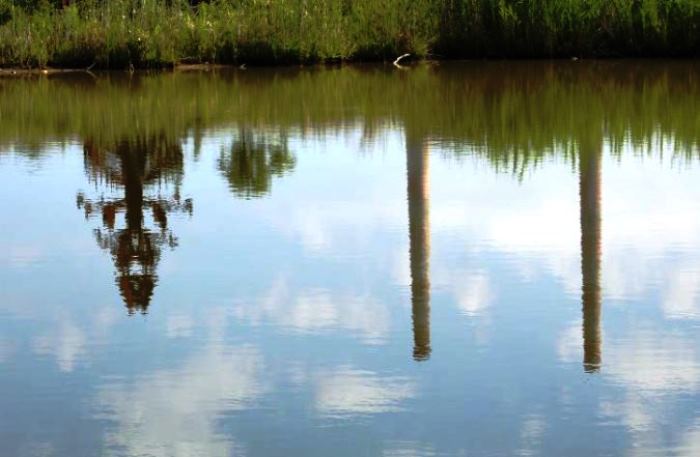


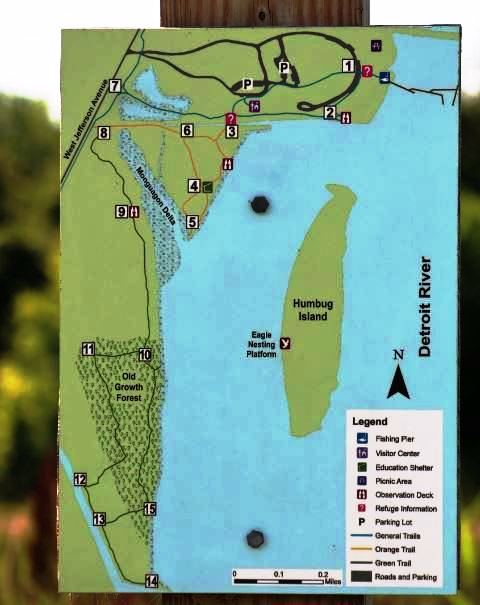

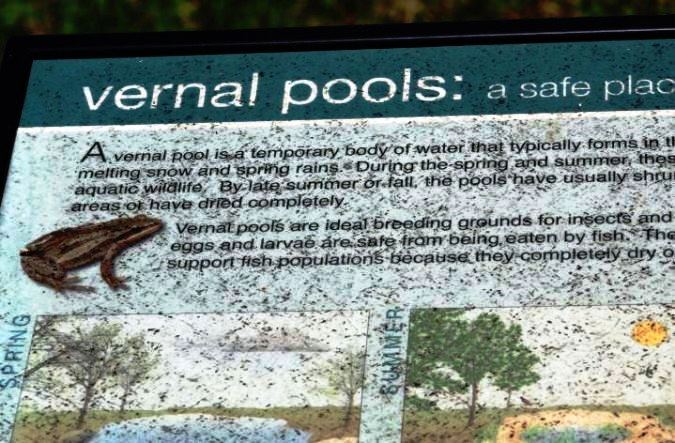




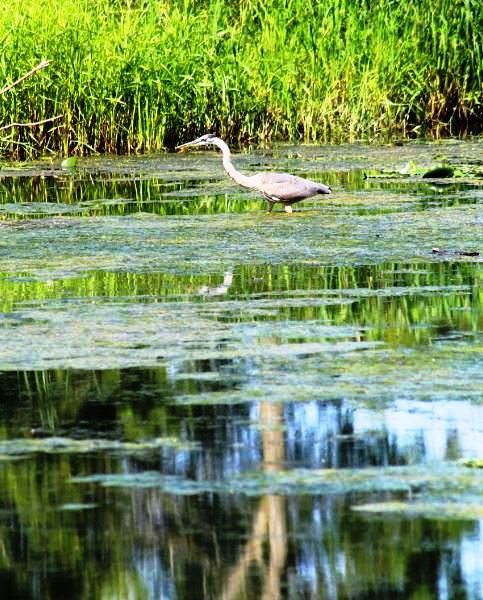







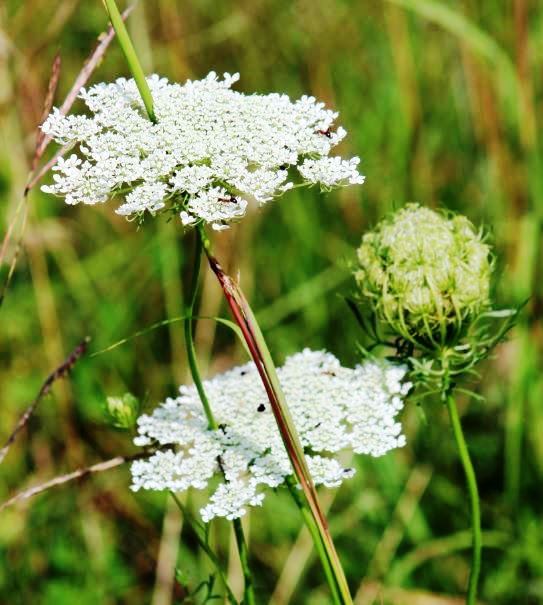
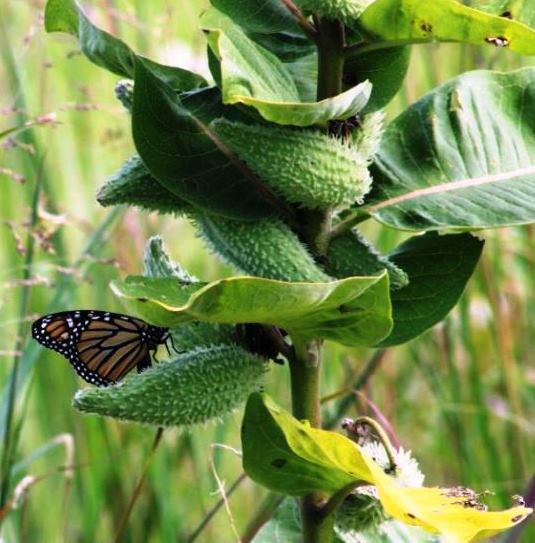
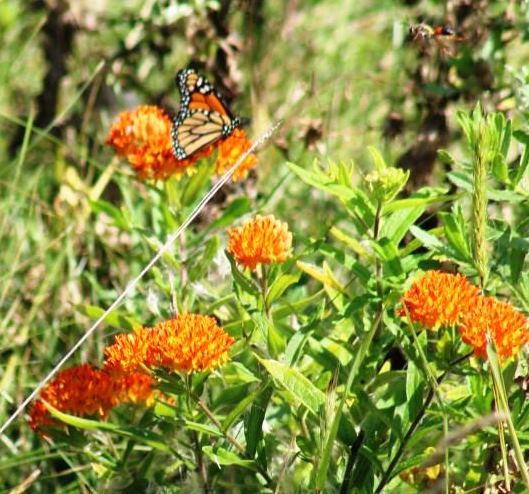




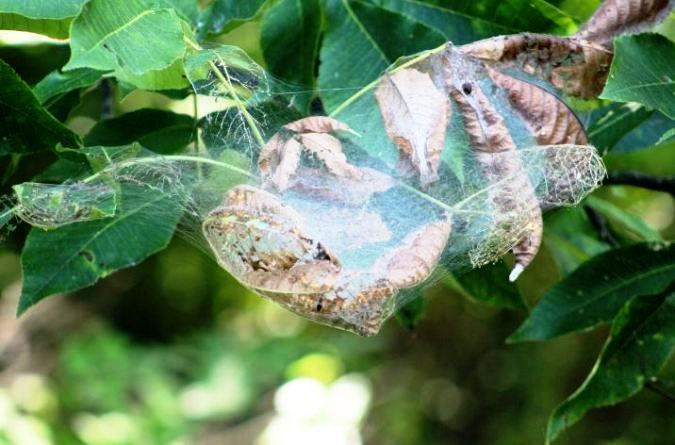





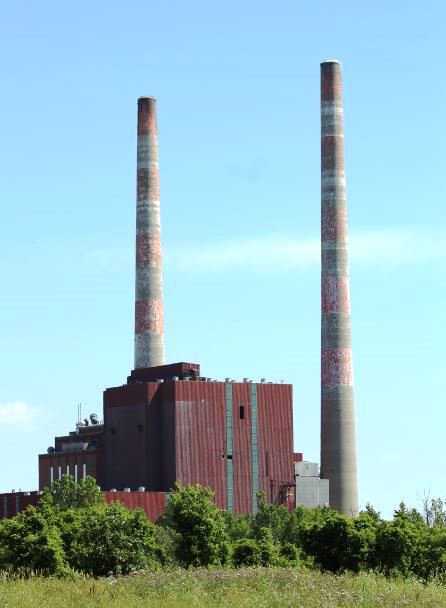















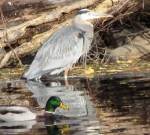



















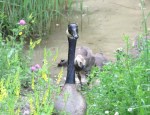













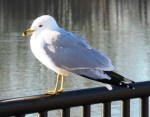













I loved the tree sign held with gloves. It would make me want to hug a tree. Best name — Humbug Park.
LikeLiked by 1 person
I loved it too Anne. That was new when I was there last Summer. I thought it was clever and I didn’t know that – it’s fun to learn things that way! “Humbug” reminds me of hard candies we had in Canada. The Laura Secord candy stores are out of business now, but that was a big seller for them, brown butter rum candies with white stripes to look like bugs. I wasn’t allowed to eat candy but my grandmother always had a package of them in her apron pocket and would sneak them to me.
LikeLike
I’m glad you had sneaky candy!!
LikeLiked by 1 person
Me too – that is just like a grandmother to do something that sweet isn’t it?
LikeLiked by 1 person
Marsh!
LikeLiked by 1 person
Love the smoke stacks being flattened!
Great place to hide out If your a critter.
LikeLiked by 1 person
I was fascinated with the smoke stacks being flattened too Wayne. I am glad you liked the video. They had an article about how it was all planned out how they would fall and the second stack had an extra kaboom and you could see a burst of flames if you noticed just before it tumbled down. The boiler house won’t be as interesting to watch implode. Many years ago, (1998), the huge Hudson’s Department Store in Downtown Detroit was imploded. It took up an entire City block and was 14 stories high. They had strategically placed dynamite all over to make the building implode and go down straight. They worried as the People Mover, an above-ground car that looks like a subway car, might have cracks in the pillars, but it remained structurally sound. The implosion was on a Saturday evening. Monday on my lunch hour, I walked down there and the dust still stirred up from the piles of bricks still remaining made me turn away. I would have thought they’d have watered it down to contain the dust? It’s pretty dense in spots at Humbug Marsh – nice for the Eastern Fox Snakes – there are lots of them. I hope I never meet one.
LikeLiked by 1 person
whatever contaminates are inside that smoke stack would be released into the surrounding environment, including peoples lungs.
Watering it all down would have washed all of the contaminates into the refuge.
LikeLiked by 1 person
No I meant the Hudson’s building … it was a lot of rubble left and dust was everywhere. I am sure there is a video of it going straight down to the ground. DTE who owns the power plant said they decontaminated everything and there was no hazardous materials. The building and smokestacks were built in 1924 and about to celebrate their 100th anniversary, so they had a lot of years to build up contaminants wouldn’t they?
LikeLike
that’s good to hear!
LikeLiked by 1 person
Yes it is Wayne – who knows what was in the stacks. I will send you a 2-minute video of the Hudson’s implosion – the popping and explosions and fall are impressive. You will see what I mean about the rubble and dust … I am sure I watched it on the news.
LikeLiked by 1 person
Here’s the Hudson’s Department Store implosion – you’ll enjoy this on. Check out the dust/rubble though!
LikeLike
You mentioned that it was very dusty around there! You have a good memory as this happened 26 years ago.
LikeLiked by 1 person
We used to walk to Hudson’s on our lunch hour all the time, just a destination, not buying anything and when they took it down, they had some sales, then abruptly closed, then scheduled the implosion. It was the largest storeI had to see it in person “for old time’s sake” … this video was incredible as it was professionally done. That building that was an entire city block and was the second largest department store (Macy’s in New York was first) – no wonder there was so much rubble!
LikeLiked by 1 person
Pingback: Sunday Stills: An #Urban Approach To Travel – Second Wind Leisure Perspectives
I just love how you combined all this beautiful nature with the contrast of the nearby urban industrial site. Your images demonstrate that left to its own devices, nature will always have her way! The sign on the tree is truly poignant. Great job on the theme this week, Linda!
LikeLiked by 1 person
Thanks Terri! I was torn between this venue and the park where I walk everyday as it is in the middle of a residential area. It is one mile from my house and I never knew it existed until they had an event there and I went to check it out. I had been walking in the ‘hood before that for my walking regimen. Humbug Marsh indeed is very unique being surrounded by industry. The implosion of the “Stacks” made the urban sights portion even more real. As you can see from the header image, the “Stacks” and boiler house are relatively close to this venue. I liked the tree too – what a great way to show how we must have trees in our lives.
LikeLiked by 1 person
I meant to mention I liked the name of Humbug Marsh.
LikeLiked by 1 person
I think it is a fun name too Terri. It is hard to believe it was an unsightly and contaminated brownfield – it has come a long way!
LikeLiked by 1 person
This was an enjoyable visit to the park!
LikeLiked by 1 person
Glad you liked this visit Anne. This was the webworm damage I mentioned to you awhile back, but the other park has more extensive damage, so when I do that post I will be sure to pass it along.
LikeLiked by 1 person
Cool place, great photos. Loved the video thanks. Incredible mix of industry and wildlife. There’s a few places like that in Australia
LikeLiked by 1 person
Thanks Brian. It is amazing that industry and nature can be in harmony and that’s just how it is here. Those twin smokestacks being imploded was an interesting video and there was a lot of planning went into this. I was sorry to see it won’t become a green space – Humbug Marsh was once a contaminated brownfield and after many years and costly cleanup, now it thrives.
LikeLiked by 1 person
Enjoyable park. Beautiful capture all. Amazing video. I watch all power plant destroyed. Why it’s do?
LikeLiked by 1 person
Glad you liked the photos Raj. The video was amazing to see how they brought two towers (163 meters tall) down so quickly after they were standing for 100 years. The boiler house will be next. This was a coal-burning energy plant and our energy provider wants to “go greener” and have less pollution, so they shut the plant down the end of 2022, plus some other coal-burning plants as well.
LikeLiked by 1 person
Okay,The coal burning energy our energy provider wants to “go greener” and have less pollution plants .Now all over world in God Greenery plants & building 🏢🏫!
Thanks you reply my question!
LikeLiked by 1 person
I hope they can go green even more Raj … how nice to try to save our planet, though in many respects, it seems like it is too late. You are welcome. 🙂
LikeLiked by 1 person
Yay for combining nature and urban together in this post! Well done. That tree sign is delightful. Ugh, on ticks…wouldn’t it be nice if the tent worms would surround the ticks and take care of each other so we wouldn’t have to be careful not to take either one home with us? Ticks are like spiders though, so maybe spiders don’t go after other bugs that create tents? I digress! That’s so interesting about the statue and the fact that it’s sharp and don’t touch it. I imagine it was a gloved operation to create it then. I bet those two towers were like a lighthouse for the boats. A lot of history there indeed. My photo favs are the cattails and the monarch on the milkweeds. 🥰
LikeLiked by 1 person
Thank you Shelley – I knew I had these pictures and with the recent implosion of the twin stacks, I thought it would work well for Terri’s post. (Or for Earth Day too for that fun tree, so I was a bit torn.) I guess I should not have not been so hasty having my two trapped possums released into the woods since they like to eat ticks. They might have been the stars of the backyard. 🙂 People were saying on the local FB site that boaters especially liked using the “Stacks” for navigating daytime or nighttime. I’m glad you liked the cattails and monarch – it’s a good thing I walked thru the pollinator gardens. I am glad I got that info on the statue – now I know why they stuck it out in the middle of the field!
LikeLiked by 1 person
You’re welcome. We live and learn, don’t we. And your posts always contain lessons for us to ponder and stories and photos to keep us entertained! 🥰
LikeLiked by 1 person
Thank you Shelley – When I went to put this post together, I was glad I had made a quick draft of all I saw that day as it made it easier to pull that info, plus all the new info about the implosion in. Glad to share what I learn with others. 🙂
LikeLike
I love the deep color of the purple loosestrife and the earthy browns of the cattails, nice contrasts to all the summery green. The sign about oxygen being held by the tree is striking and really makes one think. We owe trees a huge debt, we owe them our lives. Looking at your summer flowers and butterflies almost makes me look forward to that coming hot and humid season. With so much space occupied by industry, surrounding those spaces with trees is more important than ever.
LikeLiked by 1 person
I like that purple loosestrife too Barbara. I notice it in a lot of the gulleys and shoreline areas of these marshes, so it must be very hardy. I like that concept of the tree holding a sign to give us an idea how valuable trees are to our well being. It is amazing to see how this place thrives with industry all around and it was once a contaminated brownfield which was cleaned up and is a natural haven for birds now. I know that I am also wistful for the beauty of Summer with all the colors here. It lifts our spirits.
LikeLiked by 1 person
I was watching Sunday Morning on CBS this past weekend and they had a segment on birdwatching in New York City’s Central Park. I was astonished to learn that more than 210 species of birds make migration stops there every year! Right in the middle of the city.
LikeLiked by 1 person
That is amazing – I would have no idea that many birds would stop there. In fact when the owl who escaped from the zoo had been staying in Central Park, I was surprised that it would not have gone to a more woodsy area to roost for that year that it had its freedom.
LikeLiked by 1 person
Another power plant bites the dust. Love the loosestrife. It’s banned here but I love it.
LikeLiked by 1 person
Yes and there are more power plants to be decommissioned in the near future. The loosestrife looks pretty – at least if you had it in your garden it would be hardy, but I just looked and it is banned here in Michigan too. In all the big parks, I see it growing on a shoreline, in between boulders and in gulleys.
LikeLiked by 1 person
I had it in my last garden. They say it’s invasive in wet spots. It wasn’t invasive in my yard and it had a long bloom time. I haven’t been able to find one anywhere in the wild.
LikeLiked by 1 person
I’d like something hardy that I don’t have to worry about losing it. My Coneflowers, Black-eyed Susans and Daisies were planted in 1985 so I was gobsmacked that they died from that Polar Vortex in the Winter of 2013-2014. I’d have thought they were well established by then.
LikeLiked by 1 person
Maybe that was a once in a lifetime event. They are hardy.
LikeLiked by 1 person
I agree – I had had them for years and the Black-eyed Susans came from my neighbor, just a few clumps of them and I had about thirty feet long of them – all gone.
LikeLiked by 1 person
Seeing the cattails brought back so many memories. When I was a kid we would stop at the side of the roads and pick them to take home. This was an amazing post Linda except for the part about us having more bugs this year. Lol
LikeLiked by 1 person
That’s a nice memory Diane. Did you have to keep them in water to make them last at the house? I am glad you liked the post – I know it was long and picture-laden. Yes, same here with the bugs – ugh. I’m starting to wish we just had a normal Winter instead.
LikeLiked by 1 person
Yes, my mom did. I remember how messy they got the longer they sat but I still loved them.
LikeLiked by 1 person
The are pretty and almost velvety looking up close.
LikeLiked by 1 person
Interesting photo essay about nature co-existing with industry! Love the name Humbug Island and also the tree sign. 🙂 The pollinator gardens are lovely and sorely needed in this world. Thank you for highlighting them.
LikeLiked by 1 person
Thank you Debbie D – I am glad you liked this post. I was happy I had these photos to do Terri’s challenge because the contrast between nature and industry at this locale is amazing. It sure will look different with the smokestacks gone for all the shoreline walks I take – you couldn’t miss them wherever you walked. It is a cute name – Humbug Island; I don’t know why they named it that and I will have to research that a little. They have some nesting eagles on Humbug Island and there is a platform at the marsh where people sit with binoculars to see them. The pollinator gardens are very large and last year a local place called “Bees in the D” (D being Detroit), released 20,000 bees in their hives at the Refuge, so there will be bees and blossoms here for a long time.
LikeLiked by 1 person
Beautiful photos, Linda. Those vernal pools are at risk now that the Supremes have decided wetlands are not so much worth protecting. Truer than true. Sadder than sad.
LikeLiked by 1 person
Thank you Pam – I am glad you liked the photos. This particular vernal pool had clear water this time I walked, but I’ve seen it bone dry and other times thick green algae on the surface. At another marsh where I walk, most of the marsh dried up due to so many instances of high winds. That’s sad when Mother Nature causes problems, but this is worse when man makes that decision. Lots of waterfowl will not survive, not to mention the critters who feed on those aquatic plants, so neither will survive.
LikeLiked by 1 person
Nature will find a way. It’s we humans who are at risk. :0(
LikeLiked by 1 person
Yes, they are much more adaptable than we are.
LikeLiked by 1 person
Wow that was some video showing the smokestacks falling down. I love the sign on the tree, I think all trees should be saved but I know that’s not always possible. That was sad about the plane crashing, but at least no one was hurt. I remember years and years ago I was in Toronto watching the airshow and a Royal Air Force Hawker Nimrod crashed into Lake Ontario while performing an aerial display, all seven crew members were killed. That was very sad. I’m glad you didn’t see any snakes on the boardwalk! Are those kind poisonous?
LikeLiked by 1 person
I found that video interesting to watch too Susan. It was so perfectly choreographed and took a lot of planning. I see trees cut down in the park where I walk daily and a few years ago, they cut down a beautiful and healthy Redbud tree. It was great as a backdrop for photographing goslings with their parents. They need arborists to go through and make better determinations. Oh, that would have been terrible witnessing that crash with so many crew members killed. There was a fatality a few years ago at this air show, which is an annual event. A guy who was a “wingwalker” lost his grip and fell from the airplane wing and died. This plane crashed and made a huge fire, not far from an apartment building – eerily close. The Eastern Fox Snakes aren’t poisonous but they are large and they often hang out around that walkway or nearby in the bushes. The day they dedicated Humbug Marsh a congresswoman was there – her late husband had spearheaded a campaign to turn this space into a refuge – it took a long time to remove the contaminants. So she was asked to be there for the opening and was a little teary-eyed about it and next thing she knew, she saw a huge snake slithering around her feet. I am leery now and spend more time looking down than up.
LikeLiked by 1 person
The tree sign was a great find!
Durango had an ore smelter that operated at least through WWII and probably beyond. Shortly after I moved here, I watched them implode the last remaining smokestack. The dog park is there now. They brought the tower down during the project to remove all the radioactive tailings from the site.
LikeLiked by 1 person
I liked that tree sign too Eilene. I almost saved it for an Earth Day post! One part of Humbug Marsh was decontaminated after a lengthy process as it was originally the site of a Chrysler auto plant until the plant closed down in 1990. I agreed with the people who thought they could have taken the boiler house down, but left the smokestacks as they were used for navigational purposes for many decades, although they did mar the picturesque shoreline settings. They had decontaminated these stacks and boiler house before the implosion. I saw the aftermath of a huge department store in Downtown Detroit when I visited on my lunch hour two days after it was imploded. The air was still filled with dust from all the rubble so I quickly left.
LikeLiked by 1 person
You have such interesting locations for your rambles, Linda! This is another good one. I bet if you went back to the vernal ponds in the next few weeks (when it’s warm and not windy), there would be a lot happening. Although, probably the most activity occurs at night. Sometimes to see the frogs, you have to stand very still for quite a while. They see motion. If you can remain motionless, they think you are just another tree and start singing again.
LikeLiked by 1 person
Every year I look for those Spring Peepers Laurie – the closest I got to hearing them was a shallow gully filled with water at Lake Erie Metropark, but I know once I peered in and they saw the whites of my eyes that they hid from me. I hope I am successful this year. The vernal pond looked better in this photo since we had a lot of rain in July – the year before it was all dried up.
LikeLike
This looks like such a nice place to walk with all the beautiful flora and fauna. It was interesting to read about the sighting of the World War II Bomber and the metal statue and smokestacks. I, too, liked the sign on the trees. We had a few old oaks in our neighborhood cut down recently, and it always breaks my heart to see them go.
LikeLiked by 1 person
I think it is nicer in Summertime Rebecca, as there is so much to see and I am amazed that they have 300 species of birds here. I really need to go there more often than I do. I have one more walk to write about from last October when I went to see the leaves. I don’t have a bicycle, but they have a bike trail which goes through all the parks along West Jefferson Avenue beginning in Detroit, including this one and all the way to Northern Michigan. It is 2,000 miles long. The final part of the trail just opened the end of last year. This plane made such a loud noise, that I noticed it right away – usually, you see them buzzing around the River when they have the air show, so this was a treat to see. We lost two oak trees and a locust tree to carpenter ants years ago. There are still indentations in the ground where the oak trees stood.
LikeLiked by 1 person
That’s an impressive number of miles for a bike trail. I’m sure there is a lot of beauty to see along the way. Wow, 300 species of birds. I would think that you could easily add some new ones to your birding life list. 🙂
LikeLiked by 1 person
It is very long and I think one of the longest, continuous bike trails in the nation. They just put up some new signage in a few places as there is a local bike riding group and they were pictured on their bikes showing the new signs. I will be going there more this Summer. At least there is no construction that way. Most of the other places I go have construction in place until the Fall of 2024.
LikeLike
One of your later photos may have answered my initial question. Can you get to Humbug Island? I was thinking maybe one of those raised platform walkways takes you over from the shore. Interesting you mention the butterflies. We were in the Charleston area last week for a getaway, and biked through a neighborhood with a “butterfly garden”. We wondered what kind of flora/fauna attracts butterflies. Nothing was in bloom at the time but I’m sure the garden will be lively in a month or two.
LikeLiked by 1 person
No, you can’t get to Humbug Island by a walkway Dave, (but what a wonderful idea as there are a pair of nesting Bald Eagles there), nor is it accessible by boat. It is like Mud Island that I mention sometimes across from Dingell Park – all trees. There are a lot of small islands in the Detroit River, most of them uninhabited. I should do a post about that sometime.
The butterfly gardens are best when filled with perennials that have a lot of pinks, purples and butterfly bushes will really draw them too. But if you don’t want to do perennials, you can do annuals in colors that butterflies like (red – Salvias) or bright colors like Wild Milkweed or Lantana (both are orange). I had a butterfly garden and got a lot of butterflies as I also provided them puddle dishes (clay dishes and you put wet sand for them to drink from) and flat rocks (for them to sun on) and butterfly houses (they look like birdhouses only with slits instead of a hole; you put sticks inside and when it is windy, the butterflies go instead and rest/perch). I have contacted a landscaper about making another butterfly garden – I did it all myself last time, but I was younger. You may recall the post I wrote about gardening and you encouraged me to start another one as I was wistful about losing most of my garden to the Polar Vortex of 2013-2014. I have been dwelling on having another butterfly garden since the fire destroyed my back garden. So, the large tree that caused that electrical wire to fall down and a big fire burned the neighbor behind’s garage and stockade fence to the ground and burn my garden was cut down yesterday. So, one less worry and also … I will have more time to mess with a garden now as I am retiring tomorrow. 🙂
LikeLiked by 1 person
Congratulations on retirement, Linda! Must be so satisfying to be closing that chapter and anticipating the next one. Now you have no excuse for not breaking your annual mileage record ha. This change and others you mentioned all collectively point to another garden in your backyard (and it’s Easter – new beginnings!) Sounds like you know the in’s and out’s of a perfect butterfly garden too. Hope you’ll give another one a try.
LikeLiked by 1 person
Thanks Dave – I am very excited to be retired! Fifty years of working – whew! I had planned to retire 12/31/23 but then stayed the extra three months for the transition to a new office. I do want to have a few more hobbies now that I will have more time (after decluttering my house a bit first in April). It is a time for new beginnings and coincides perfectly with Easter. I enjoyed the butterfly the last time and I thought I might dabble in bees too, with the bee houses you buy to encourage bees to pollinate. I know it will take about a year to establish the perennial garden to encourage butterflies, moths and bees where you ensure you have flowers for most of the growing season. I am glad for not sitting as much too. I figure the goodness of my walking regimen goes south when I have been getting here and sitting for work, then as I catch up on the news/social media, then on to blogging. So more exercise and longer walks will be good for me too.
LikeLiked by 1 person
Several cluttered thoughts. First, that close up of the sculpture is so much more detailed than I remember. I still think it’s funny that have to warn people not to touch sharp metal. Second, those walkways with no railings make it incredibly dizzy. I thought I was going to end up crawling over the cooling pools in Thermopolis, although the paths were like 6 feet wide. They don’t have railings over most the paths on the grand prismatic pool walk in Yellowstone and if you fall in, you die. We know tourists are dumb, why make their risk of death higher than necessary? And there is something so cool at watching old buildings and powerplants being returned to their component parts. I hope whatever storage thing they build will blend in better with nature.
LikeLiked by 1 person
This might have been a better photo as the prior pics were in the Fall, so there were lots of brown leaves in the background. I would have no idea that it was about a food chain though. I am grateful for the info Maddie gave us though.
I am not all that comfortable on the walkway even though you can almost almost see the bottom through the murky water. So it’s not deep, but I can’t swim. But what worries me is they have these humongous Carp that live in the Delta Pond. They jump out of the water sometimes and if you don’t see them in the water first, they will startle you, not to mention they’d get you wet. I don’t want to end up in the drink! If there’s any wind I won’t go across either. They should put a railing there – it would not detract from the nature setting. A few years ago I went on my first/only tour of a lighthouse. It is on Grosse Ile, about 10 miles from my house and it sits on private property, so the homeowner opens up his backyard and private pier to the lighthouse once a year for the historical society to take guided tours. The pier was wooden and very long and no railing over the deep Detroit River. On top of it, we had to climb up the lighthouse’s very steep stairs, twists and turns – going up was bad enough – coming down you had to go backwards and no light in there (they wanted to keep the vintage look). My legs were shaking when I got to the bottom of the stairs. There was a lighthouse tour group, the first stop on their tour. They were pros at this, while I was sure I’d keel over into the water while walking back to shore. Never again will I do that. I agree with you – you know someone is going to have an accident, a wind gust blows them into the water, or they are taking a selfie and step back. How often do you read that happening? Everyone hoped for green space and many wanted to keep the stacks intact since they were there just shy of 100 years.
LikeLiked by 1 person
I expect those stacks could have been a danger. As for that lighthouse tour, I developed a fear of heights, sort of, and I would not be going up and down a stairway with no rails to hold on to. Especially backwards.
LikeLiked by 1 person
I would never do it again, but all those people, mostly retired, go on tours to different lighthouses. They were spry; used to it I guess. They were a great group of people and they each had a passport, like the national park passports and they had it stamped for each lighthouse. They were on a seven-day tour of lighthouses in Ontario and had two stops in Michigan first. Years ago our journalism class went to tour the “Detroit News” (one of two daily newspapers in Detroit) new state-of-the-art publishing facility. You could look down on the operation of the printing presses, etc. from high up and stand on glass-bottom walkways. (Kind of like med students view a surgical procedure.) One of the students said “I am afraid of heights and cannot look down – the guide we had laughed at her statement and a minute later, she fainted dead away, falling in a heap at our feet. They had to call for EMTs to take her off the viewing platform and into a nurses station at that plant. Never minimize what another person’s fears are ….
LikeLiked by 1 person
I enjoyed this post. The photos are wonderfull…love the monarch on the milkweed. I remember when they imploded the seattle Kingdome. That was crazy.
LikeLiked by 1 person
Thank you Kirstin – it was a great walk that day and I enjoy walking here in the Summer. They have come along well on their pollinator gardens which they began planting in 2020, the year this venue opened. They have also put in hives to encourage bees as well. They imploded a huge department store (Hudson’s) in Downtown Detroit in 1998. It took up an entire City block and it took some time while each section slowly dropped to the ground. I worked in Downtown Detroit at the time, so I went down to see it two days after the implosion and there was still dust from the rocks everywhere – it was difficult to see and breathe too. It is amazing to watch an implosion.
LikeLike